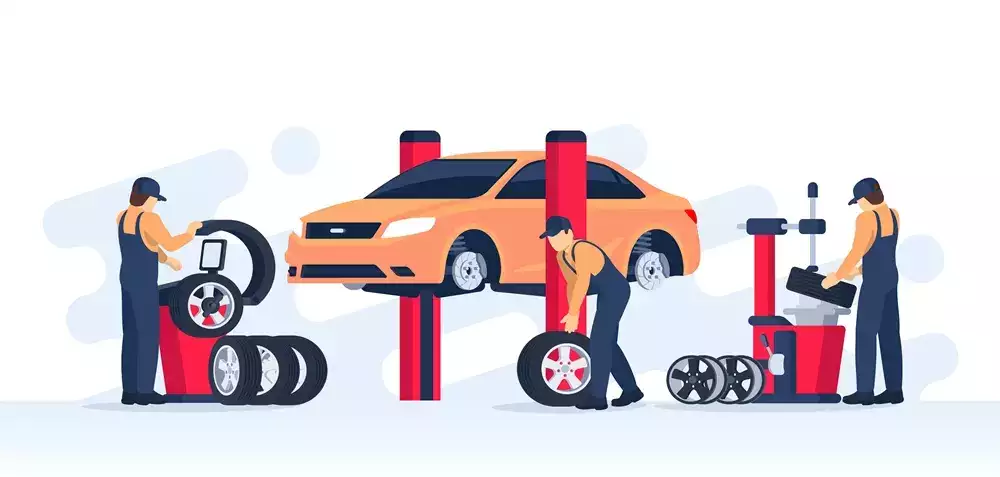Car insurance is a necessary expense for all vehicle owners, but it doesn’t have to break the bank. With some smart strategies and careful consideration, you can reduce your car insurance premiums without compromising on coverage. In this article, we will explore ten effective ways to save money on car insurance while still ensuring adequate protection for your vehicle.

1. Shop Around for the Best Rates
One of the most effective ways to reduce car insurance premiums is by shopping around and comparing rates from different insurance providers. Each company has its own criteria for calculating premiums, so getting quotes from multiple insurers allows you to find the best deal. Take the time to research and compare rates online or consult with an independent insurance agent to find the most competitive option for your needs.
Read Also : https://hindimetro.com/how-to-negotiate-student-loan-settlement/
2. Increase Your Deductible
By opting for a higher deductible, you can significantly lower your car insurance premiums. The deductible is the amount you must pay out of pocket before your insurance coverage kicks in. Increasing it means you’ll have a higher initial cost in the event of a claim, but it can lead to substantial savings on your premiums over time.
3. Bundle Policies for Multi-Line Discounts
Consider bundling your car insurance with other insurance policies, such as homeowners or renters insurance, to take advantage of multi-line discounts. Many insurance companies offer discounted rates when you have multiple policies with them. Bundling not only saves you money but also simplifies your insurance management by having all your policies in one place.
4. Maintain a Good Driving Record
Your driving record plays a significant role in determining your car insurance premiums. Avoiding accidents, traffic violations, and claims will help you maintain a clean driving record, which translates to lower insurance rates. Practice safe driving habits, obey traffic laws, and consider enrolling in defensive driving courses to improve your driving skills and further reduce your premiums.
5. Take Advantage of Discounts
Insurance companies often provide various discounts that can help lower your premiums. These discounts may include safe driver discounts, good student discounts, low-mileage discounts, or discounts for certain professional affiliations. Inquire with your insurance provider about the available discounts and see if you qualify for any of them.
6. Install Safety and Anti-Theft Devices
Equipping your vehicle with safety and anti-theft devices can help reduce the risk of theft or accidents, making your car less of a liability to the insurance company. Anti-lock brakes, airbags, alarm systems, and tracking devices are examples of safety features that can qualify you for discounts on your insurance premiums. Check with your insurer to find out which devices are eligible for discounts.
Read Also : https://hindimetro.com/retirement-planning-tips-and-strategies/
7. Opt for Usage-Based Insurance
Usage-based insurance, also known as pay-as-you-go insurance, is a policy that calculates premiums based on your actual driving habits. By installing a telematics device in your vehicle, the insurance company can track your mileage, speed, and driving behavior. If you are a safe driver who doesn’t spend much time on the road, opting for usage-based insurance can result in significant savings.
8. Consider the Car You Drive
The type of car you drive affects your insurance premiums. Generally, vehicles with a high safety rating, low theft risk, and affordable repair costs tend to have lower insurance premiums. Before purchasing a car, research its insurance costs and factor them into your decision-making process. Additionally, older cars or vehicles with a lower market value may not require comprehensive coverage, which can further reduce your premiums.
9. Pay Premiums Annually
While most insurance companies offer monthly or quarterly premium payment options, choosing to pay annually can often lead to savings. Many insurers provide a discount to policyholders who pay their premiums upfront for the entire year. If you have the financial means to pay annually, this option can help reduce your overall car insurance costs.
10. Review Your Policy Regularly
Car insurance needs can change over time, so it’s essential to review your policy periodically to ensure you have the appropriate coverage. As your vehicle depreciates in value or as your driving habits evolve, you may be able to adjust your coverage levels and potentially lower your premiums. Contact your insurance provider to discuss any changes that may impact your policy.
Conclusion
Reducing car insurance premiums without sacrificing coverage is possible with the right strategies in place. By shopping around, increasing your deductible, bundling policies, maintaining a good driving record, and taking advantage of discounts, you can achieve significant savings on your car insurance costs. Additionally, installing safety devices, considering usage-based insurance, being mindful of the vehicle you drive, paying premiums annually, and reviewing your policy regularly will further contribute to reducing your insurance expenses. Remember to assess your unique circumstances and choose the options that best suit your needs.
Frequently Asked Questions (FAQs)
The amount you can save by shopping around for car insurance varies depending on several factors, including your driving record, location, type of vehicle, and the insurance providers you compare. However, it is not uncommon to find significant differences in premiums between insurers, so taking the time to gather multiple quotes can potentially lead to substantial savings.
Increasing your deductible will impact the amount you have to pay out of pocket before your insurance coverage kicks in. While a higher deductible can lower your premiums, it means you’ll have a higher initial cost if you need to file a claim. It’s important to choose a deductible amount that you can comfortably afford in case of an accident or damage to your vehicle.
Insurance companies offer discounts for various safety devices that reduce the risk of accidents or theft. Examples of devices that may qualify for discounts include anti-lock brakes, airbags, alarm systems, electronic stability control, and anti-theft systems. Check with your insurance provider to find out which specific safety devices can help you save on premiums.
Usage-based insurance involves using telematics devices or smartphone apps to monitor your driving behavior and mileage. The data collected, such as speed, acceleration, braking, and time of day, is used to determine your insurance premiums. Safe driving habits and lower mileage can lead to potential discounts on your car insurance.
Yes, it is essential to review your car insurance policy annually. Your circumstances may change over time, such as changes in your driving habits, vehicle value, or eligibility for new discounts. Reviewing your policy allows you to ensure that your coverage still meets your needs and identify opportunities to adjust your policy and potentially lower your premiums.



Yes